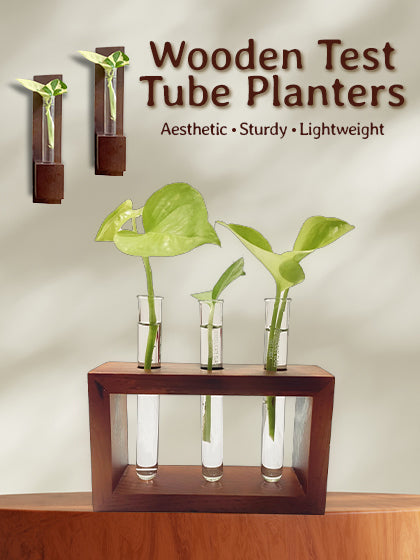| What's in the article: |
Add a little freshness to your living space, indoor plants can transform your space into a vibrant oasis — but occasionally they need a little help. Fertilization is one of the very most important parts of plant care. If you want to know all about indoor plant fertilizers, then you’re in the right place, because in this guide we’ll take a look at all you need to know about indoor plant fertilizers: the types, the application methods, and the common mistakes you need to avoid.
Importance of Fertilizers for Indoor Plants
Indoor plants need plenty of nutrients and fertilizers. Potting soil, while offering some nutrients, often doesn’t have what you need for long term growth. The right plant fertilizer are the ones that replenish these nutrients, then promote healthy foliage, vibrant blooms and robust root systems.
What Are Essential Nutrients?
Indoor plants require three primary nutrients:
- Nitrogen (N): Promotes leafy growth.
- Phosphorus (P): Supports root development and flowering.
- Potassium (K): Aids in overall plant health and disease resistance.
Additionally, indoor plants also need trace elements like calcium, magnesium, and iron, which are essential for various physiological processes.


Types of Indoor Plant Fertilizers
-
Liquid Fertilizers
Liquid fertilizer for indoor plants is easy to apply and quickly absorbed by plants. These fertilizers often come in concentrated forms that you dilute with water. They’re great for fast-acting nutrient delivery, especially during the growing season.
-
Granular Fertilizers
Granular fertilizers are dry and can be mixed into the soil. They release nutrients slowly, making them a good option for long-term feeding. They require more frequent application than liquids but provide a steady supply of nutrients over time.
-
Organic Fertilizers
Organic fertilizer for plants is made from natural materials like compost, bone meal, and worm castings. They improve soil structure and provide a slow, steady release of nutrients. Organic fertilizers are an excellent choice for those looking to maintain a sustainable garden.
-
Slow Release Fertilizers
These fertilizers gradually release nutrients over an extended period, often up to several months. They are convenient for busy plant parents as they require less frequent application. They can be found in both granular and pellet forms.
Fertilizing Indoor Plants
-
Right Time to Fertilize Indoor Plants
Fertilizing your indoor plants is important to know when to do it. In the growing season, which is different for each plant type, fertilizing is generally better than at any other time. Most indoor plants go dormant during winter and don’t need as much fertilizer.
-
Opting for the Right Type of Fertilizers for Indoor Plants
Choosing the best fertilizer for indoor plants depends on your plant type, growth stage, and the specific nutrients it needs. For instance, flowering plants may benefit more from phosphorus-rich fertilizers, while leafy plants thrive on nitrogen.
How to Apply Fertilizers
Applying fertilizers properly can make a significant difference in your plant’s health. Here’s how:
- Read Instructions:Always follow the manufacturer’s instructions for dilution and application rates.
- Dilute Fertilizers:If using liquid fertilizers, dilute them in water according to instructions before application.
- Water Before Fertilizing:Water your plants a day before applying fertilizer to reduce the risk of root burn.
- Even Distribution:Apply the fertilizer evenly around the base of the plant, avoiding direct contact with the leaves.
Common Mistakes to Avoid
-
Over-Fertilizing
One of the most common mistakes is over-fertilizing, which can lead to nutrient burn, yellowing leaves, and even plant death. Always adhere to recommended dosages.
-
Under-Fertilizing
Conversely, under-fertilizing can stunt growth and lead to nutrient deficiencies. If your plant appears weak or has yellowing leaves, it may need more nutrients.
-
Misreading Instructions
Different fertilizers have different application rates and methods. Make sure to read and understand the instructions for the specific fertilizer you are using to avoid common pitfalls.
Conclusion
The use of a correct houseplant fertilizer can make a big difference to the health and beauty of your indoor plants. When you know which fertilizers are available and best application practices as well as an environment that will allow your plants to thrive you can take the right kind of fertilizers for you plants. There are many benefits to using plant fertilizer such as lush foliage and lots of blooms.
Back to top

Back to top
FAQ's
1. What should I do if I accidentally over-fertilize?
Flush the soil with water to help leach out excess fertilizer. Monitor your plant closely for signs of recovery.
2. How long does indoor plant fertilizer last?
This varies by type; liquid fertilizers usually last a few weeks, while slow-release fertilizers can provide nutrients for several months.
3. When should I fertilize my indoor plants?
Fertilize during the growing season, typically from spring to early fall, and reduce or stop during the dormant winter months.
Back to top

Tanvi Agarwal - Co-founder
Driven by a deep-seated love for nature and a keen entrepreneurial spirit, she co-founded Bombay Greens, transforming urban spaces into thriving green havens. Recognizing the need for accessible and sustainable gardening solutions in the bustling city, she poured her passion into building a brand that empowers individuals to cultivate their own green spaces, regardless of their location or experience. Her vision extends beyond simply selling gardening items; it's about fostering a community connected to nature, one balcony, rooftop, and windowsill at a time.
Back to top



























